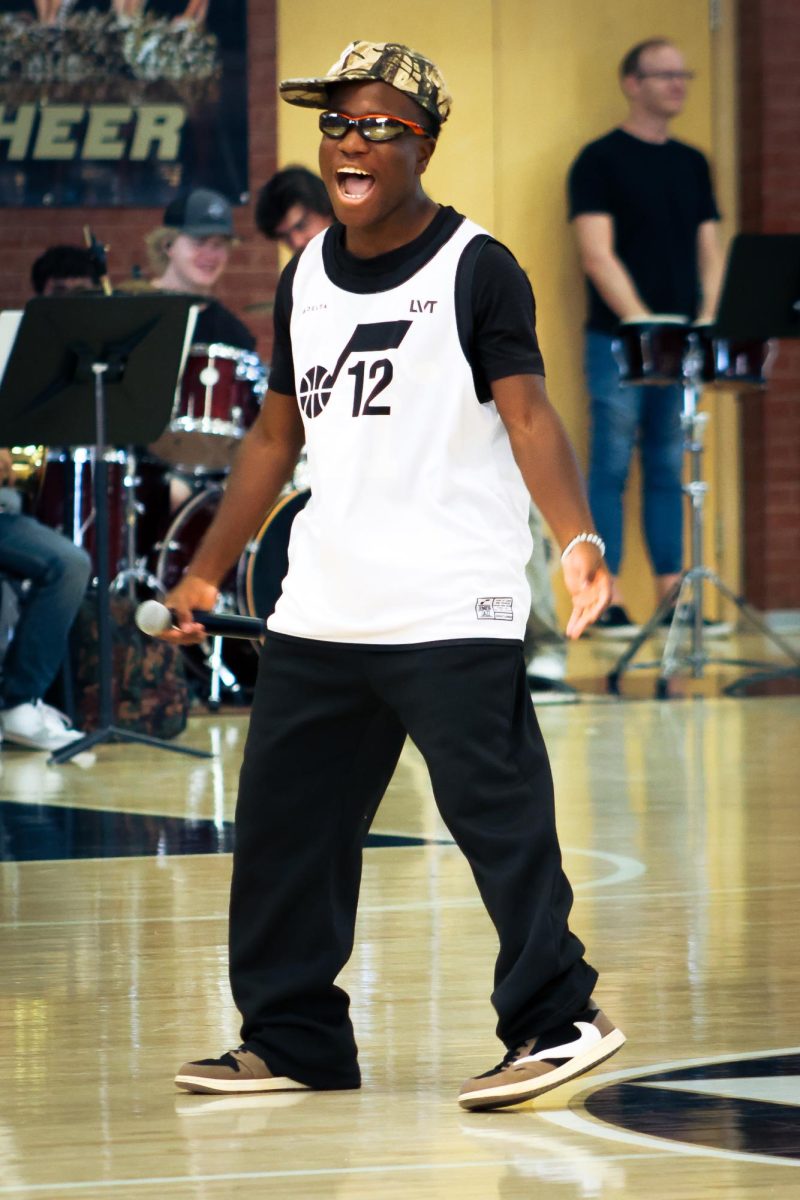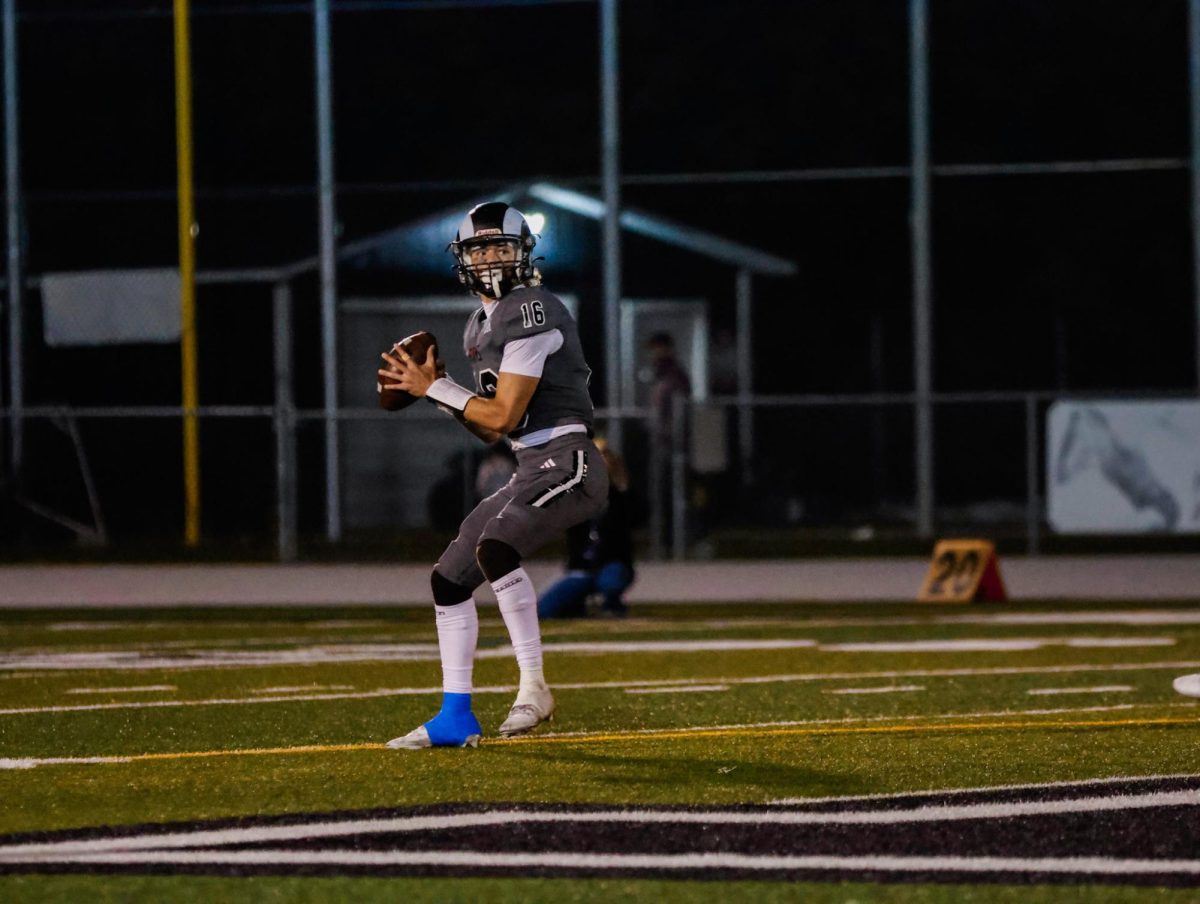Vaping Undercover
Students Are Finding Creative, Bold Ways To Vape At School
November 1, 2019
With the cold weather setting in, it’s officially sweater season. But not all sweaters are what they seem. Chewing on hoodie strings may seem just like any other habit, but with the Vaprwear hoodies now available on Amazon, this habit could actually be a sign of a growing addiction.
Vaprwear hoodies are made specifically to hide vaping in places it’s not allowed. There’s also new vape watches, vape “flash drives”, and vape fobs all marketed towards those who need to hide their pens and pods.
“They [students] choose devices that are stealthy, many of the new vaping devices actually program to look small enough to fit in their hands,” Marcia Peterson, who works in the tobacco prevention and cessation program for Salt Lake County Health Department, said. “Juul is small enough that it fits in a pocket, they are designed for kids to be able to hide. People are manufacturing at the youth population and everything is either online or it’s published and sought out through the social media mode.”
Products like these have a very specific target audience, and students fall very easily into that category. Students who vape do all that they can to not get caught with vape products, going as far as to vape into backpacks in history or the ventilation systems of CTE shops.
As vaping has become more and more popular, students have become bolder in vaping at school because they can’t usually vape at home.
“My sophomore year I started smoking weed and then junior year I started vaping and, of course, the dab pens which is like vaping weed. From there I went to almost always vaping. It used to give me this dizzy feeling that I really enjoyed so I started to vape more than smoke weed or dab,” a Highland senior, who wishes to remain anonymous, said.
This senior quit smoking after being caught and realizing she was a “bad influence” on those around her. Before quitting though, she would often go to the bathroom to hide and smoke to calm nerves or to get that dizzy feeling.
Another place that students get away with vaping is in the gym locker rooms. The locker rooms are the most secretive and dangerous places for kids to vape and not get caught. Teachers can’t go into the locker rooms to monitor, and vaping is too inconspicuous in smell because it is created to smell like perfume or body spray. All of this makes vaping difficult to control at Highland.
“Vaping is tough because back in the day when we were looking for smoking, that smoke would linger and it doesn’t dissipate for a while,” Highland principal Chris Jenson said.
Vaping is something that kids have to hide from teachers but make obvious to other students. This is why the locker rooms are such a convenient place; vapers can vape openly around others without teachers. For those who vape outside the locker rooms, students hide their vape products in sleeves because pens are small enough to do that. They will even go as far as to vape into bags to catch the vapor.
Wasatch High School, in order to combat the vaping epidemic, has installed new vape detectors to monitor vaping in places where teachers cannot go. Some students believe these detectors were unnecessary and an overreaction, but the growing numbers in health problems from vaping says otherwise.
“The thing that I worry about with people is, if there is something they want to do, people are going to bring out the tools they need. It turns into a game and nothing gets clarified,” Thomas Kingsford, teacher and coach at Highland, said.
Vaping in enclosed spaces such as locker rooms, bathrooms, or closets means that there is no ventilation for the vapor, letting it hang in the air.
“If you are in a closed room and you don’t have any air movement, and you watch that vape cloud, unlike cigarette smoke which dissipates kind of evenly, vape hangs and it creates these sheets. That’s what’s coating the inside of your lungs,” Jenson said.
This creates health problems, not only in the students that vape, but in those around them as well. People who vape often believe that they are just breathing out water vapor, but there is so much more to it, and second-hand vaping is the exact same as second hand smoke that happens with cigarettes. Vaping in a locker room affects every single student in that enclosed space. People who vape can suffer from heart attacks, flu symptoms, diabetic disease symptoms, and they can die.
“The reports about teens dying from vaping and all that made me really nervous about my own health and others as well. I would just say, don’t start it’s not worth it,” the anonymous senior said.
The Administration is trying to educate students on the effects of vaping and how it can change their lives, but it’s hard to teach kids when they don’t care.
“The kids think they’re invincible,” Kingsford said.
With the new studies and cases on vaping diseases and death, vaping education is more important to the administration than ever.
“It’s terrifying. In my mind, the oil and stuff like that, for me the way I’m putting this together, it’s like coating the inside of your lungs with saran wrap. It’s like plastic. Over time I think vape is just going to seal off your alveoli (any of the many tiny air sacs of the lungs),” Jenson said.
Not only are the people vaping at risk of death, but children around people with vape products are at risk as well. If students are vaping or if they have e-liquids, they must have those vials closed tightly so a younger sibling can’t get them, because it can be deadly. With flavors that mimic cereals and candy, it’s easy for little kids to get interested.
“They [younger siblings/kids], if they drink it, could be extremely ill or die. It can kill young children,” Peterson said.
People can be careless, especially younger kids. Students often don’t know the full risks of vaping, or they don’t care. Students might not know that second hand vapor is real or that a Juul pod has the nicotine equivalent of at least a full pack of cigarettes.
But marketing is specifically targeted towards these younger kids as seen with the watches and hoodies.
“Originally, marketing was pushed towards older teens but it didn’t take too long for little brother and sisters to think it was cool,” Peterson said.
As that age group got more and more interested, so did younger siblings and friends, causing that marketing to shift and evolve with the crowd. Vaping became a very social thing between kids and teens, making it even more wanted.
“It gave me a sense of belonging and I made a lot of friends when I was smoking and when they did it in front of me I felt kinda left out, almost like because I didn’t smoke anymore I couldn’t relate to these people,” the anonymous senior said.
With even younger kids, not only could vaping mean social time, but is seen as something forbidden, and rebellion has always been a popular way to be “cool” according to Jenson.
“It looks ‘so cool’ but it’s not cool to take years off your life,” Jenson said.
In the brain, there is something called the prefrontal cortex, which is what helps with decision making. Because that part of the brain is less developed, kids have always taken more risks than adults.
“It stops your prefrontal cortex, the front part of your brain, from finishing developing. Obviously, your brain is developing to a certain point and it makes you be a risk taker. Reasoning and judgement don’t develop until you’re 24, 25, 26 years old,” Peterson said.
When this decision making doesn’t develop, it makes marketing to younger students easier and easier.
With the risks being discovered, the marketing coming out, and student’s need to be cool or different, vaping is a more terrifying thing to administration every day. As much teachers can talk to students and new detectors can be installed or made, students will have to decide the life they want to live, and how long they want to live it.
Vaping is going to be a continuous problem in schools and out of schools until students decide to change themselves.
“I have to remember the type of person I want to be and being someone who is always looking for a fix isn’t what I want to be,” the anonymous senior said.





























